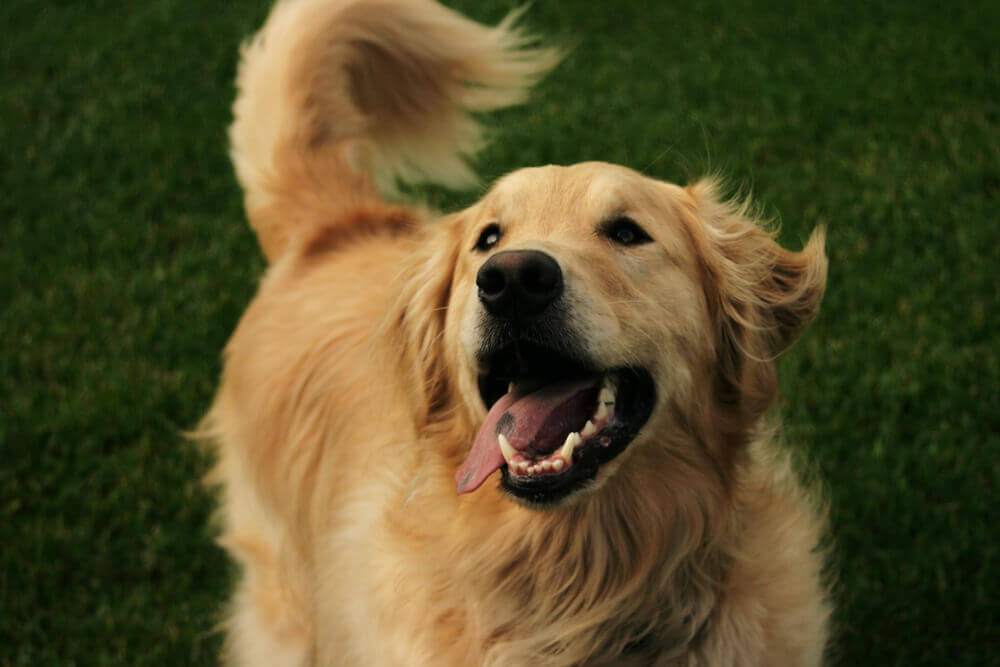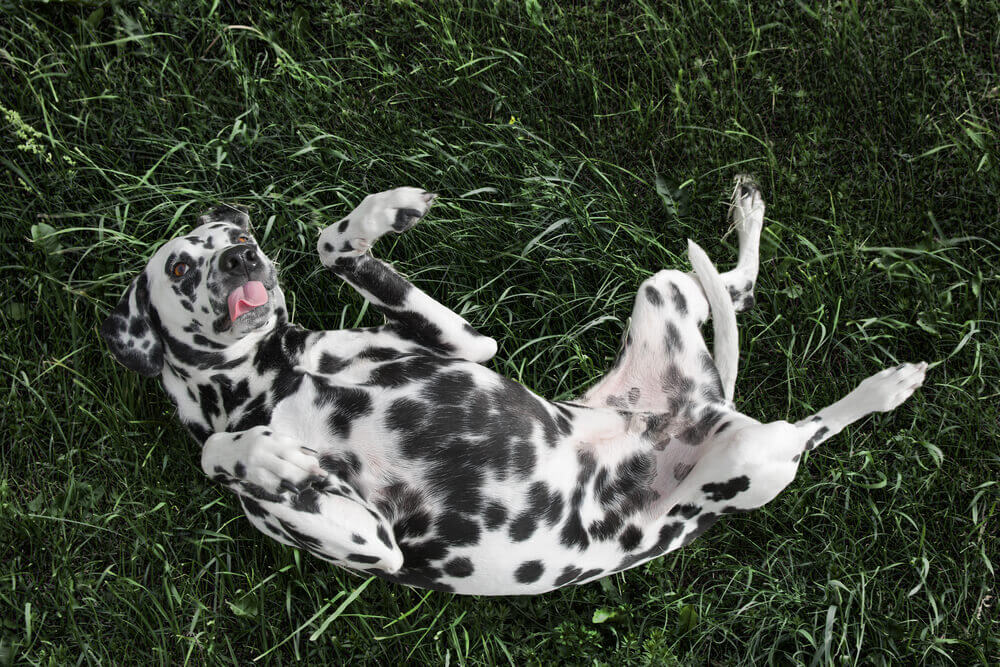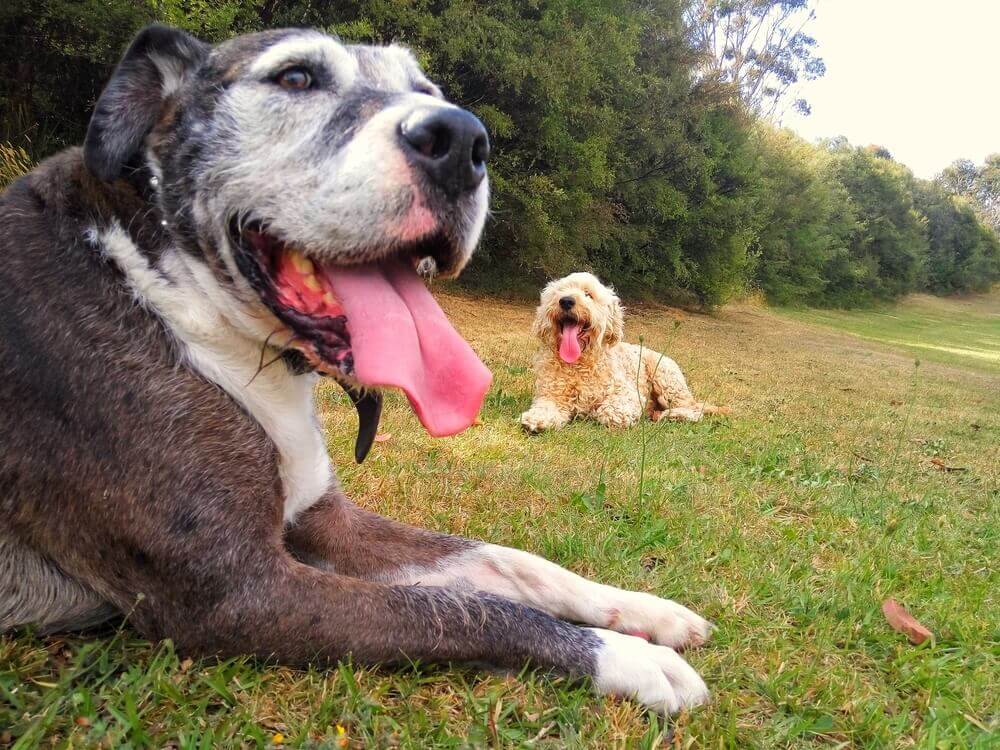Dogs are our best friends. We do everything together – from sleeping to exercising to cuddling on the couch. But, how well do we understand our dogs? Learn all about dog body language below!
Common Belief #1: A dog with a wagging tail is friendly and happy to interact.

Reality: A wagging tail indicates that a dog is experiencing some level of arousal – happy, tense, angry, fearful, alert, reactive. In order to understand what your dog is trying to communicate, there’s more to the story. Consider the environment and context to better understand what your dog’s wagging tail means.
Here is a quick rundown of some of the many ways dogs wag their tails.
- Held straight out from their back wagging in broad strokes, often with swaying hips, a relaxed body and soft eyes. Likely relaxed.
- Helicopter wagging with a relaxed body (the viral video “happy guy”). Likely excited.
- Held above their back and quickly wagging with a relaxed face and jumpy body language. Heightened arousal, carefully assess the situation before approaching.
- Held low, possibly tucked between their legs, and quickly wagging. Likely fearful.
- Wagging stiffly, especially if the dog is standing tall with their weight forward. Likely alert or tense.
- Held high and appears to be vibrating – may be an active threat. Do not approach for both your and the dog’s safety.
A wagging tail can provide a savvy human with valuable insight into a dog’s emotional state.
Common Belief #2: The dog rolled on their back, they want a belly rub!

Reality: Dogs roll over for many reasons. One reason is that they trust you and want you to pet their belly. Rolling over onto their back places a dog in an exposed position from which it is difficult to defend themselves. A dog who is requesting pets will often have a relaxed body, with its legs splayed open and a relaxed face. Some dogs, regardless of their bond with their owners, will never be comfortable rolling onto their backs. Other dogs have learned that rolling onto their backs is a trick that guarantees love and petting. Dogs may also roll over as part of play with another dog!
Other dogs roll onto their backs to de-escalate a situation and show that they are not a threat. In this case, a dog may roll over with a tense, crouching body. Look out for a tucked tail and/or averted eyes.
Common Belief #3: A yawning dog is a tired dog.
Reality: Much like humans, dogs yawn when they are tired. However, dogs also yawn when they are stressed or anxious. This is a type of displacement behavior used to relax or relieve tension. Other common displacement behaviors include lip licking, “shaking,” sneezing, intently sniffing the ground (with no discernible reason), and grooming. A yawn can also be used as a calming signal when meeting new friends to show that the dog is not a threat or to diffuse a tense situation. And, did you know that dogs can actually catch our yawns?!
Common Belief #4: Panting dogs just need to cool down.

Reality: One reason dogs pant is to cool down – from heat or exercise. Panting is also part of communication within play between dogs. Importantly, panting can also be a sign of fear, stress and anxiety. If a dog is tense, looking away, quickly shifting their gaze or showing other displacement behaviors then they are likely experiencing some fear, stress or anxiety.
Regardless of the cause, one important sign to look out for when a dog is panting is a spatulate tongue, a tongue extended far out of the dog’s mouth with a wider end (like a spatula). Dog’s tongues spatulate when held tensely, which can mean stress or distress (from excessive heat or exercise). If your dog has a spatulate tongue, and their body language, environment and/or context suggest your dog is trying to cool down, strong change they are over-heating.
Common Belief #5: Greeting a dog by looking directly into their eyes is friendly.
Reality: Many dogs enjoy or have been desensitized to looking into their owner’s eyes – it’s a behavior we commonly train them to do, intentionally or not! However, in dog language, sustained direct eye contact is an assertive behavior signaling a challenge. As a general rule, do not make direct or sustained eye contact with a dog you just met. If you meet a dog staring directly at you with a tense body, hair standing up, and/or alert tail, be careful. Continue to watch the dog without direct eye contact, while slowly backing away to give the dog space.
Whenever you are trying to decode a dog’s body language, remember to look at the whole body of the dog and the environment. Practice makes progress, and makes you a better, more understanding pup parent and friend.




















